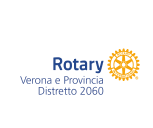The airway epithelium deploys a plethora of defense mechanisms against bacteria, viruses and fungi, also through the airway surface liquid (ASL) properties, such as thickness, viscosity, and pH. These features need to be finely tuned and controlled by ion channels and transporters present on the surface epithelium, such as CFTR.
During infection and inflammation, airway epithelium properties are further modulated to boost its ability to fight pathogens and recruit immune cells. In particular, there is an increase in the airway surface viscosity.
Researchers speculated that the transient hyperviscous state could be instrumental to locally immobilize bacteria and promote their killing by recruited neutrophils. While in non-CF epithelia this state is reversed, CF epithelia cannot switch to the fluid state and the hyperviscous state starts a vicious cycle of dehydration, defective bacterial eradication, and inflammation.
The aim of this project is to understand how the changes observed on airway surface properties impact on bacterial killing and immune cells recruitment and what are the alterations that occur in CF.
Airway epithelial cells from CF and control patients, with and without treatment with stimuli inducing inflammation, will be used. Experiments will be conducted in collaboration with FFC Ricerca Servizio Colture Primarie). Under these conditions, airway epithelial cells will be exposed to various strains of Pseudomonas aeruginosa in order to evaluate their bactericidal activity. At a more advanced stage, experiments will also include neutrophils to investigate how their interaction with epithelial cells promotes bacterial killing.
The results will be relevant to better understanding how human airways fight bacterial infection and how these mechanisms are defective in people with CF. These results may reveal targets for innovative therapeutic interventions, particularly important for those people who cannot benefit from the current available CFTR modulators.
WHO ADOPTED THE PROJECT
La mano tesa onlus

€ 52.500

€ 28.000

€ 28.000
